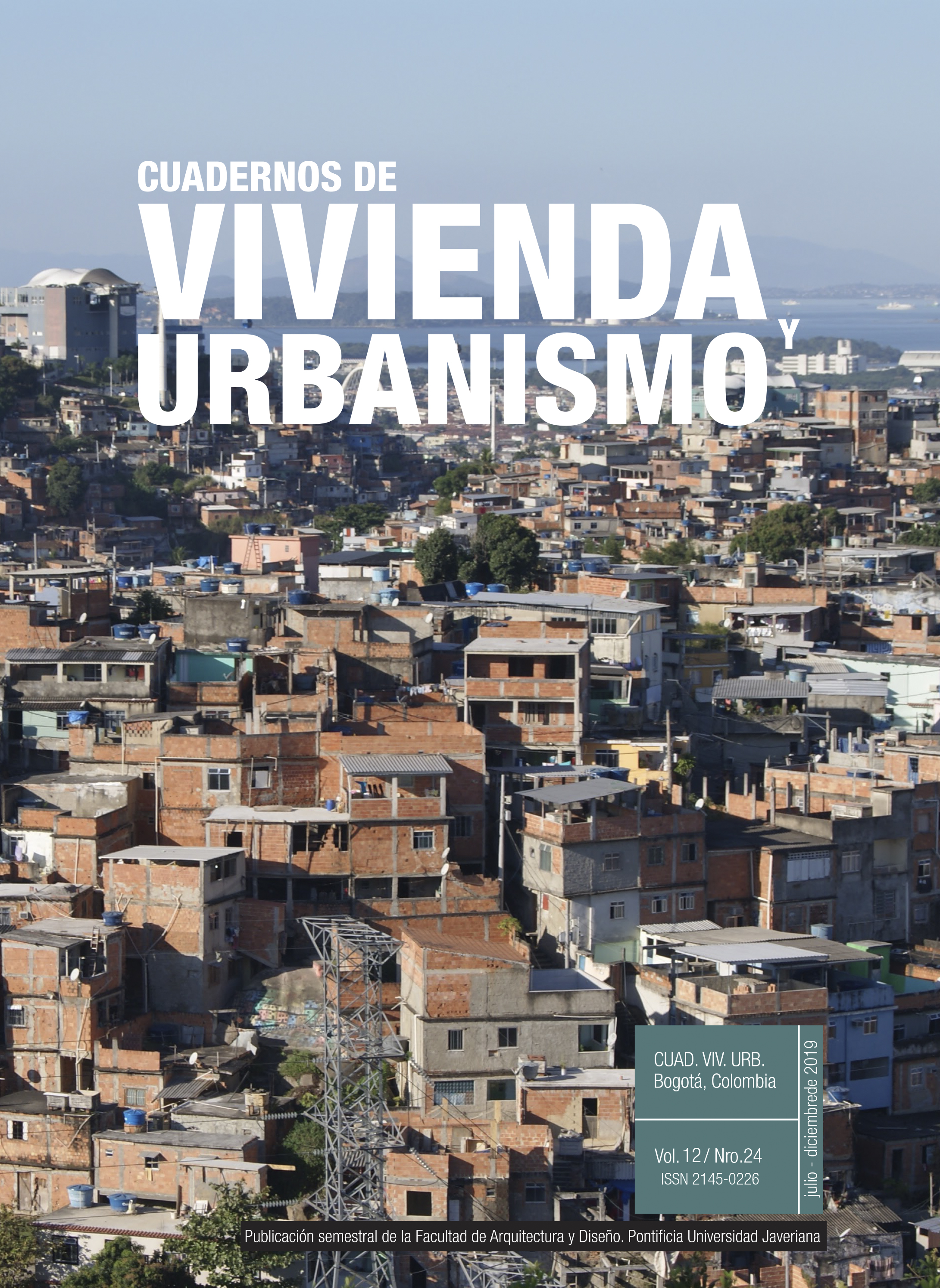Abstract
This study focuses on the impact of the real estate growth in Lima, how the urban space is being used and how all this affects the social dynamics, the neighborhood cohesion and the individual’s identity in relation to his/her place of living. By studying the development of a neighborhood undergoing a real estate densification process, this work identifies the patterns of public space use and its evolution amidst the neighborhood changes. It also studies the arrival of a new and bigger population. Many of the basic premises concerning the public space deficits and the changes in the land use therein become evident under a quantitative viewpoint. However, the surveys show that the perceptions among the local population do not always match those facts. Likewise, a dialogue has been started between reality and perception, which allows define the events that remain and those being replaced.
Arendt, H. (2011/1958). Vita activa. Milano: Bompiani.
Bailly, A. S. (1979). La percepción del espacio urbano. Madrid: Instituto de Estudios de Administración Local.
Beer, A. B., Delshammar, T., y Schildwatch, P. (2003). A Changing Understanding of the Role of Greenspace in High-Density Housing: A European Perspective. Built Environment, 132-143.
Borja, J., y Muxí, Z. (2000). El espacio público, ciudad y ciudadanía. Barcelona: Electa.
Brillenbourg, A., Feireiss, K., y Klumpner, H. (2005). Informal city. Caracas Case. München: Prestel.
Carrión, M. F. (2007). Espacio público: punto de partida para la alteridad. Quito: Flacso.
Cuervo-Calle, J. J., y Herrán-Cuartas, C. (2013). La casa en el parque: expresiones domésticas en el espacio público. Cuadernos de Vivienda y Urbanismo, 6(12), 228-247.
Cullen, G. (1974). El paisaje urbano. Tratado de estética urbana. Barcelona: Editorial Blume.
Franck, K. A., y Stevens, Q. (2007). Loose Space. Possibility and Diversity in Urban Life. Nueva York: Routledge.
Gehl, J. (2006/2004). La humanización del espacio urbano. La vida social entre los edificios. Barcelona: Reverté.
Groat, L., y Wang, D. (2002). Architectural Research Methods. Nueva York: John Wiley & Sons.
Huffschmid, A. (2012). From the City to lo Urbano: Exploring Cultural Production of Public Space in Latin America. Iberoamericana, XII(45), 119-136.
Jacobs, J. (2011/1961). The Death and Life of Great American Cities. Nueva York: Modern Library.
Johnson, S. (2001). Sistemas Emergentes. O qué tienen en común hormigas, neuronas, ciudades y software. Madrid: Fondo de Cultura Económica.
Krier, R. (1981). El espacio urbano. Barcelona: Gustavo Gili S.A.
Lefebvre, H. (1973/1970). La rivoluzione urbana. Roma: Armando Armando.
Lima cómo vamos. (2013). Encuesta Lima cómo vamos 2012. Recuperado de https://www.limacomovamos.org/cm/wp-content/uploads/2014/09/EncuestaLCV.pdf
Lima cómo vamos. (2018). VIII Informe de percepción sobre calidad de vida en Lima y Callao. Lima: Asociación Unacem.
López, F. (2011). Boom limeño en la construcción. Business negocios en el Perú, (189), 30-32.
Ludeña-Urquizo, W. (2004). Lima. Historia y urbanismo en cifras. 1821-1970. Lima: Universidad Nacional de Ingeniería.
Lynch, K. (2001/1984). La imagen de la ciudad. Barcelona: Gustavo Gili.
Páramo, P., Burbano, A., Jiménez-Domínguez, B., Barrios, V., Pasquali, C., Vivas, F., … Moyano, E. (2018). La habitabilidad del espacio público en las ciudades de América Latina. Avances en psicología Latinoamericana, 36(2), 345-362.
Páramo, P., y Burbano-Arroyo, A. (2014). Los usos y la apropiación del espacio público para el fortalecimientode la democracia. Revista de Arquitectura, 16, 6-15.
Pérez-Bourzac, M. T. (2018). El espacio público contemporáneo en la ciudad del siglo XXI. ¿Crisis o transformación? ACE Architecture, City and Environment, 12(36), 131-140.
Roca-Mora, A. (2013). El boom inmobiliario. Poder, (18), 66-76.
Rowe, C., y Koetter, F. (1998/1981). Ciudad collage. Barcelona: Gustavo Gili.
Soja, E. W. (2000). Postmetrópolis. Londres: Wiley.
Tokeshi, J., y Takano, G. (2007). Espacio público en la ciudad popular: reflexiones y experiencias desde el sur. Estudios Urbanos. Recuperado de https://209.177.156.169/libreria_cm/archivos/pdf_869.pdf
Trachana, A. (2008). La evolución de la forma del espacio público. Buenos Aires: Nobuko.
Urban-Think Tank. (2013). Torre David. Informal Vertical Communities. Zürich: Lars Müller Publishers.
Vega-Centeno, P. (2017). La desigualdad invisible: el uso cotidiano de los espacios públicos en la Lima del siglo XXI. Territorios, (36), 23-46.
Zaiatz-Crestani, A. M., y Martins de Araújo-Klein, R. M. (2016). Espaço, imagem e memória: adensamento dos conteúdos coletivos à materialidade da cidade. Territorios, (36), 139-157
This journal is registered under a Creative Commons Attribution 4.0 International Public License. Thus, this work may be reproduced, distributed, and publicly shared in digital format, as long as the names of the authors and Pontificia Universidad Javeriana are acknowledged. Others are allowed to quote, adapt, transform, auto-archive, republish, and create based on this material, for any purpose (even commercial ones), provided the authorship is duly acknowledged, a link to the original work is provided, and it is specified if changes have been made. Pontificia Universidad Javeriana does not hold the rights of published works and the authors are solely responsible for the contents of their works; they keep the moral, intellectual, privacy, and publicity rights.
Approving the intervention of the work (review, copy-editing, translation, layout) and the following outreach, are granted through an use license and not through an assignment of rights. This means the journal and Pontificia Universidad Javeriana cannot be held responsible for any ethical malpractice by the authors. As a consequence of the protection granted by the use license, the journal is not required to publish recantations or modify information already published, unless the errata stems from the editorial management process. Publishing contents in this journal does not generate royalties for contributors.



